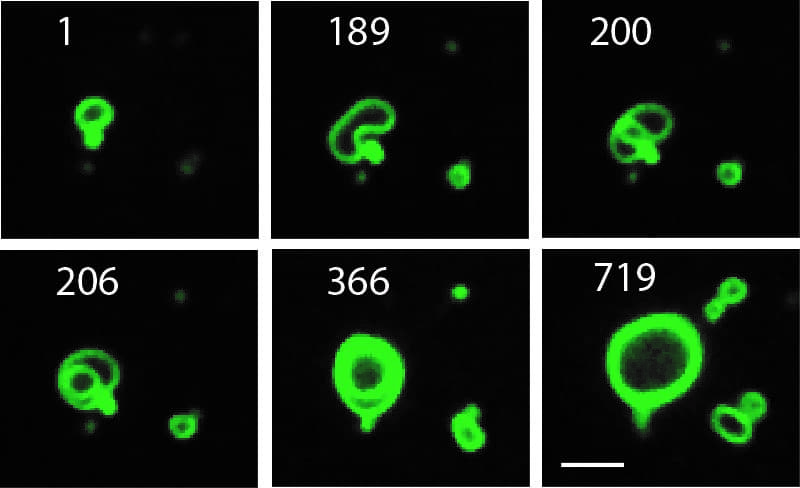Artificial Cell Membrane Capable Of Continual Growth Like Living Cells
A team of researchers from UC San Diego have made it possible for an artificial cell to mimic an important characteristic of a living cell that makes them capable of sustaining continual growth. The team consisting of biologists and chemists have become successful in synthesising an artificial cell that replicates the behaviour of more complex organisms such as living cell membranes. One of the major achievements of the team is that they've made the synthetic cell adapt its composition in response to an environmental cue. Till date, scientists have been able to have lipids self-assemble into bilayer vesicles. However, it is the first time that an artificial cell can self-form the persistent phospholipid membrane in a continual manner. In other words, the artificial cell can form new catalytic membranes on its own.

[numbers correspond to minutes of duration]
In a paper published by the team, it has been noted that to have the system transform high-energy building blocks into new synthetic membranes, they replaced the complex biochemical pathway network with a single autocatalyst, which essentially drives the sustainable membrane growth.
This indefinite self synthesis is a result of the provision of simpler chemical building blocks to the more complex lipid membranes.
In a demonstration time-lapse video captured over a period of 12 hours, the team shows how the membrane's surface area and vesicle volume increases at 60-second intervals. Do take a look -
Source: #-Link-Snipped-#

[numbers correspond to minutes of duration]
In a paper published by the team, it has been noted that to have the system transform high-energy building blocks into new synthetic membranes, they replaced the complex biochemical pathway network with a single autocatalyst, which essentially drives the sustainable membrane growth.
This indefinite self synthesis is a result of the provision of simpler chemical building blocks to the more complex lipid membranes.
In a demonstration time-lapse video captured over a period of 12 hours, the team shows how the membrane's surface area and vesicle volume increases at 60-second intervals. Do take a look -
Source: #-Link-Snipped-#
0
